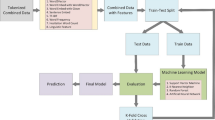Abstract
English expression, language characteristics and usage norms are quite special, which is quite different from Chinese. This has special requirements for auxiliary teaching tools that use computer technology for English text processing. Based on neural network algorithm, this paper combines the actual needs of English grammar error correction to construct an English grammar error correction model based on neural network. In data processing, after feature selection, logistic regression model is used to analyze the influence of different features on article error correction. The article error correction incorporating word vector features mainly explores how to effectively express the features in English grammar error correction. In addition, this paper proposes two methods to optimize the feature representation in article error correction. One is to directly use the word vector corresponding to the word as a feature, replacing the original One-hot encoding, and the other uses a clustering method to compress the article features. Finally, this paper designs experiments to study the performance of the model constructed in this paper. The results obtained show that the model constructed in this paper has a certain effect.

















Similar content being viewed by others
References
Ramalakshmi E, Golla S (2015) An advanced fuzzy constructing algorithm for feature discovery in text mining. Int J ComputAppl 127(17):30–34
Gissel ST (2015) Scaffolding students’ independent decoding of unfamiliar text with a prototype of an eBook-feature. J InfTechnolEduc Res 2015(14):439–470
Takuro O (2015) Scene text localization using object detection based on filtered feature channels and crosswise region merging. Growth Change 21(3):61–76
Kamble RR, Kodavade DV (2018) Relevance feature search for text mining using FClustering algorithm. Int J ComputSciEng 6(7):223–227
Maruthu P, Rajendran VDK (2016) Efficient feature extraction for text mining. Adv Nat ApplSci 10(4):64–73
Wu G, Zhao M, Han L (2016) A fingerprint feature extraction algorithm based on optimal decision for text copy detection. Int J SecurAppl 10(11):67–78
Soleymanpour M, Marvi H (2016) Text-independent speaker identification based on selection of the most similar feature vectors. Int J Speech Technol 20(1):1–10
Mojaveriyan M, Ebrahimpour-komleh H, JalaleddinMousavirad S (2016) IGICA: a hybrid feature selection approach in text categorization. Int J IntellSystTechnolAppl 8(3):42–47
Aghdam MH, Heidari S (2015) Feature selection using particle swarm optimization in text categorization. J ArtifIntell Soft Comput Res 5(4):38–43
Robati Z, Zahedi M, Fayazi Far N (2015) Feature selection and reduction for persian text classification. Int J ComputAppl 109(17):1–5
Zia T, Abbas Q, Akhtar MP (2015) Evaluation of feature selection approaches for Urdu text categorization. Int J IntellSystTechnolAppl 07(6):33–40
Zia T, Akhter MP, Abbas Q (2015) Comparative study of feature selection approaches for Urdu text categorization. Malays J ComputSci 28(2):93–109
Li D, Jin XZ, Cui LH (2016) Text recognition algorithm based on text features. Int J Multimed Ubiquitous Eng 11(5):209–220
Yan K, Li Z, Zhang C (2016) A New multi-instance multi-label learning approach for image and text classification. Multimed Tools Appl 75(13):7875–7890
Kumar G, Vivekanandan K (2017) Intelligent model view controller based semantic webservice call through mishmash text featuring technique. J ComputTheorNanosci 14(4):2021–2029
Shi B, Bai X, Yao C (2017) An end-to-end trainable neural network for image-based sequence recognition and its application to scene text recognition. IEEE Trans Pattern Anal Mach Intell 39(11):2298–2304
Al-Tahraw MM (2016) Polynomial neural networks versus other arabic text classifiers. J Softw 11(5):418–430
Hu Y, Milios EE, Blustein J (2016) Document clustering with dual supervision through feature reweighting. ComputIntell 32(3):480–513
Qian Q, Jin R, Yi J et al (2015) Efficient distance metric learning by adaptive sampling and mini-batch stochastic gradient descent (SGD). Mach Learn 99(3):353–372
Dong H, Gong S, Liu C et al (2017) Large margin relative distance learning for person re-identification. IET Comput Vis 11(6):455–462
Delgaty L (2015) Twelve tips for academic role and institutional change in distance learning. Med Teach 37(1):41–46
Stefanovic M, Tadic D, Nestic S et al (2015) An assessment of distance learning laboratory objectives for control engineering education. ComputApplEngEduc 23(2):191–202
Remesh BP (2015) Developing open and distance learning programme in labour and development: results of a needs assessment study. J Nat Hist 196(29):265–291
Ye HJ, Zhan DC, Jiang Y (2019) Fast generalization rates for distance metric learning: Improved theoretical analysis for smooth strongly convex distance metric learning. Mach Learn 108(2):267–295
Luo Y, Wen Y, Liu T et al (2019) Transferring knowledge fragments for learning distance metric from a heterogeneous domain. IEEE Trans Pattern Anal Mach Intell 41(4):1013–1026
Hsu CC, Kung CH, Jheng JJ et al (2019) Unsupervised distance learning for extended self-organizing map and visualization of mixed-type data. Intell Data Anal 23(4):799–823
Acknowledgements
The research in this paper was supported by Social and Science Fund of Hunan Province: Research on categorization Perception of wh-words under the influence of linguistic experience (NO. 18WLH21).
Author information
Authors and Affiliations
Corresponding author
Ethics declarations
Conflict of interest
The authors declared that they have no conflicts of interest to this work. We declare that we do not have any commercial or associative interest that represents a conflict of interest in connection with the work submitted.
Additional information
Publisher's Note
Springer Nature remains neutral with regard to jurisdictional claims in published maps and institutional affiliations.
Rights and permissions
About this article
Cite this article
Hu, L., Tang, Y., Wu, X. et al. Considering optimization of English grammar error correction based on neural network. Neural Comput & Applic 34, 3323–3335 (2022). https://doi.org/10.1007/s00521-020-05591-2
Received:
Accepted:
Published:
Issue Date:
DOI: https://doi.org/10.1007/s00521-020-05591-2




